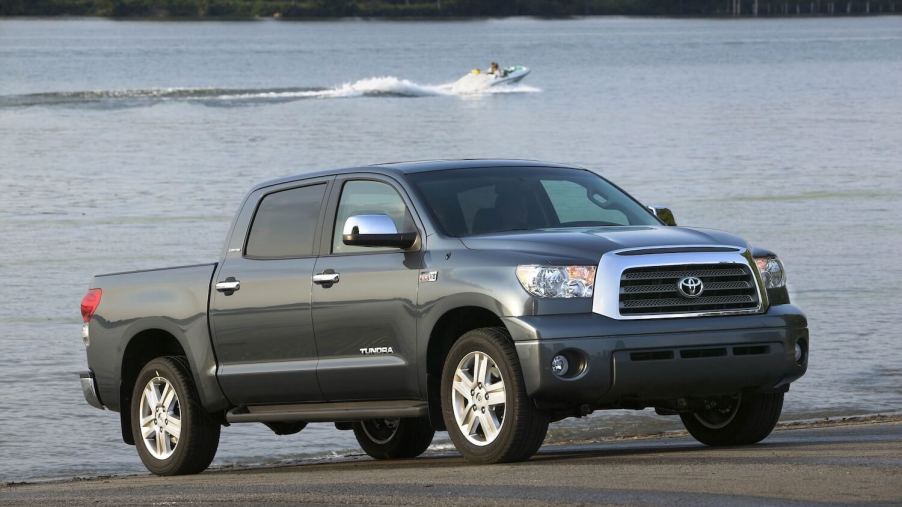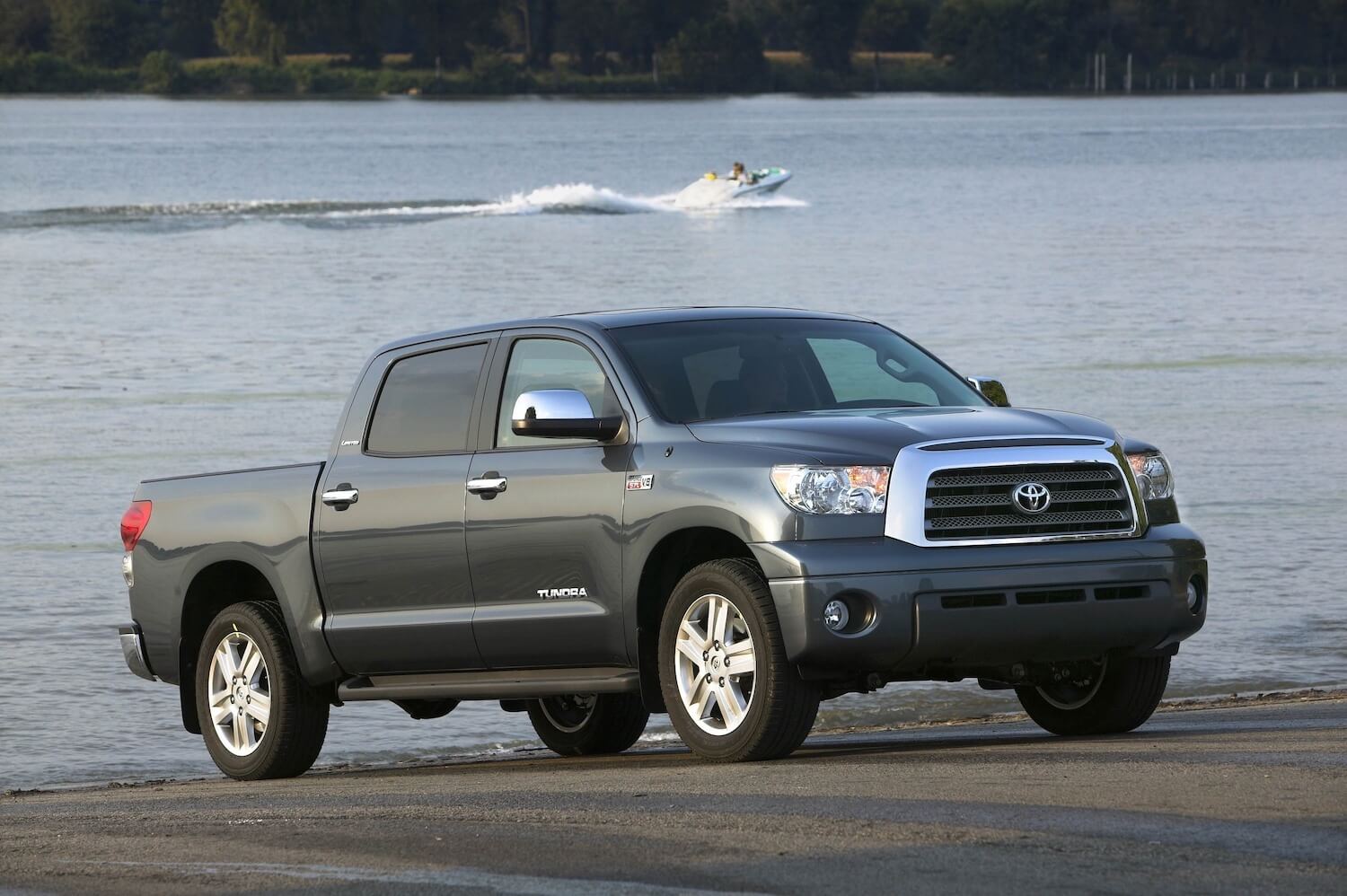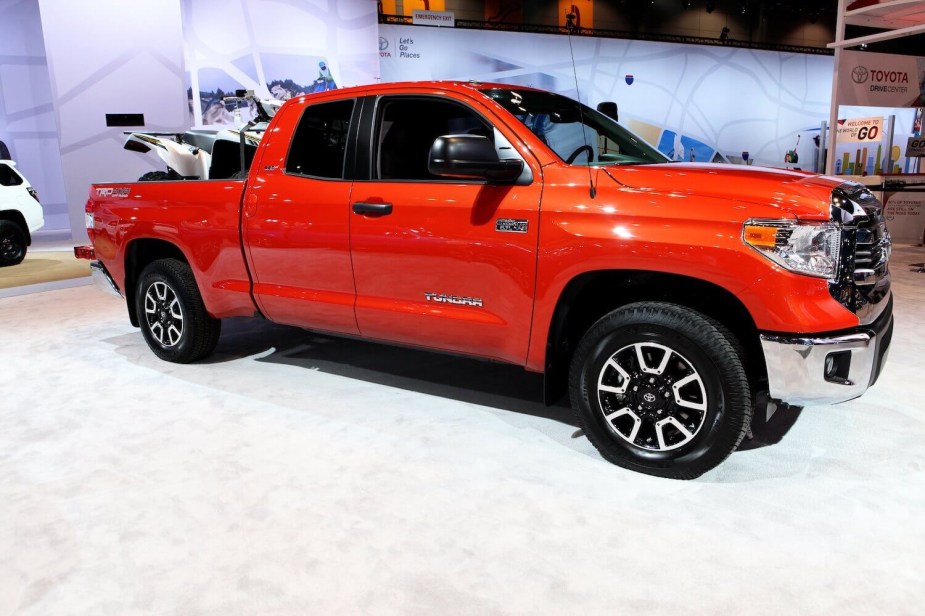
3 Common Toyota Tundra Problems You Can Fix Yourself, According to a Mechanic
Toyota has a reputation for legendary reliability, and its full-size Tundra pickup truck is no exception. But the truth is that even the Toyota Tundra faces some common problems. There are specific Tundra problems, reported by hundreds of owners, that you can easily address yourself:
- Air pump failure
- Ignition coil failure
- Exhaust 02 sensor failure
Secondary injector pump failure

My colleague Amanda Cline wrote up the Toyota Tundra issues reported by the greatest number of owners. A secondary air injector pump failure was one of the most common Tundra problems, showing up at 133,582 miles on average.
So what is a secondary air injector pump? The expert mechanics at A1 Auto filmed a Youtube video on common Tundra problems and explained that this part is simply a pump that injects air into the exhaust system while the motor’s still warming up to reduce the amount your truck pollutes. When it fails, it will not impact how your truck performs. But it will illuminate a check engine light which can mask other, more serious problems.
Can you replace this pump yourself? Possibly. The A1 Auto mechanics revealed that early second-generation Tundras had this pump located beneath the manifold, so replacing it is a real chore best left to a professional. But later second-generation Tundras have the same pump in the fender well, easily accessible.
Ignition coil failure

Another common reason a second-generation Toyota Tundra throws a check engine light is a worn ignition coil. The Tundra has one ignition coil attached to each spark plug, converting 12 volts into the 40,000 volts the spark plug requires. As a coil wears out, its spark plug may struggle to ignite the fuel/air mixture in the cylinder. This leads to a rough idle, losing power, and losing mpg.
If you see a check engine light, you’ll want to use a code reader to find out what caused the light. Your local auto parts store can probably also read this code for you. If it’s a specific ignition coil, replacing it will be as easy as changing your spark plug (and now is a great time to throw a fresh plug in anyway). See more about testing worn ignition coils.
Exhaust O2 sensor failure

A third common cause of that pesky check engine light is a failed Oxygen (O2) sensor in your exhaust system. The second-generation Toyota Tundra has four O2 sensors in total. Two are set into its two tailpipes, between the engine and the catalytic converter. These provide important feedback to the engine, and when they fail, the engine can run poorly.
The second pair of 02 sensors are downstream of the catalytic converters. When they fail you’ll see a check engine light, but the truck shouldn’t run differently.
The 02 sensors are just screwed into the exhaust pipe, so changing them should be as easy as unplugging them, then unscrewing them with a wrench–right? Not so fast. Depending on how much salt you drive through, the O2 sensors may be severely rusted in place. If you want to attempt to remove them, it would be wise to spray them in penetrating oil periodically, for a few days.
Remember, if you break off an O2 sensor trying to remove it, you can accidentally create an exhaust leak. A real pro move is to make sure your local mechanic has the availability to finish the job on the day you attempt it. Finally, if one O2 sensor fails, it’s a good idea to replace all four. You don’t want to have to go through the entire process again.
Next, learn about the only Toyota Tundra model year to ever receive an ‘average’ score for reliability or watch A1 Auto’s resident mechanic explain the full set of five common Toyota Tundra problems:



